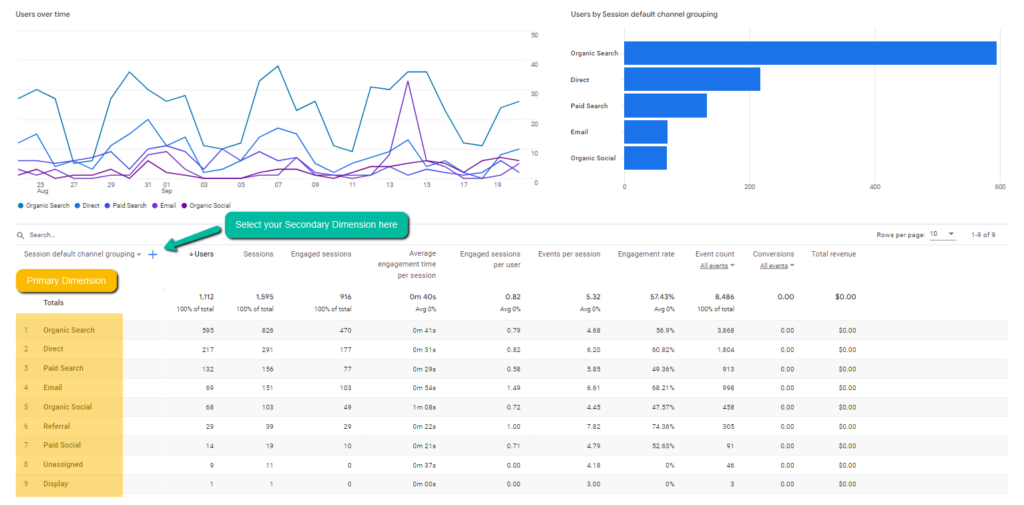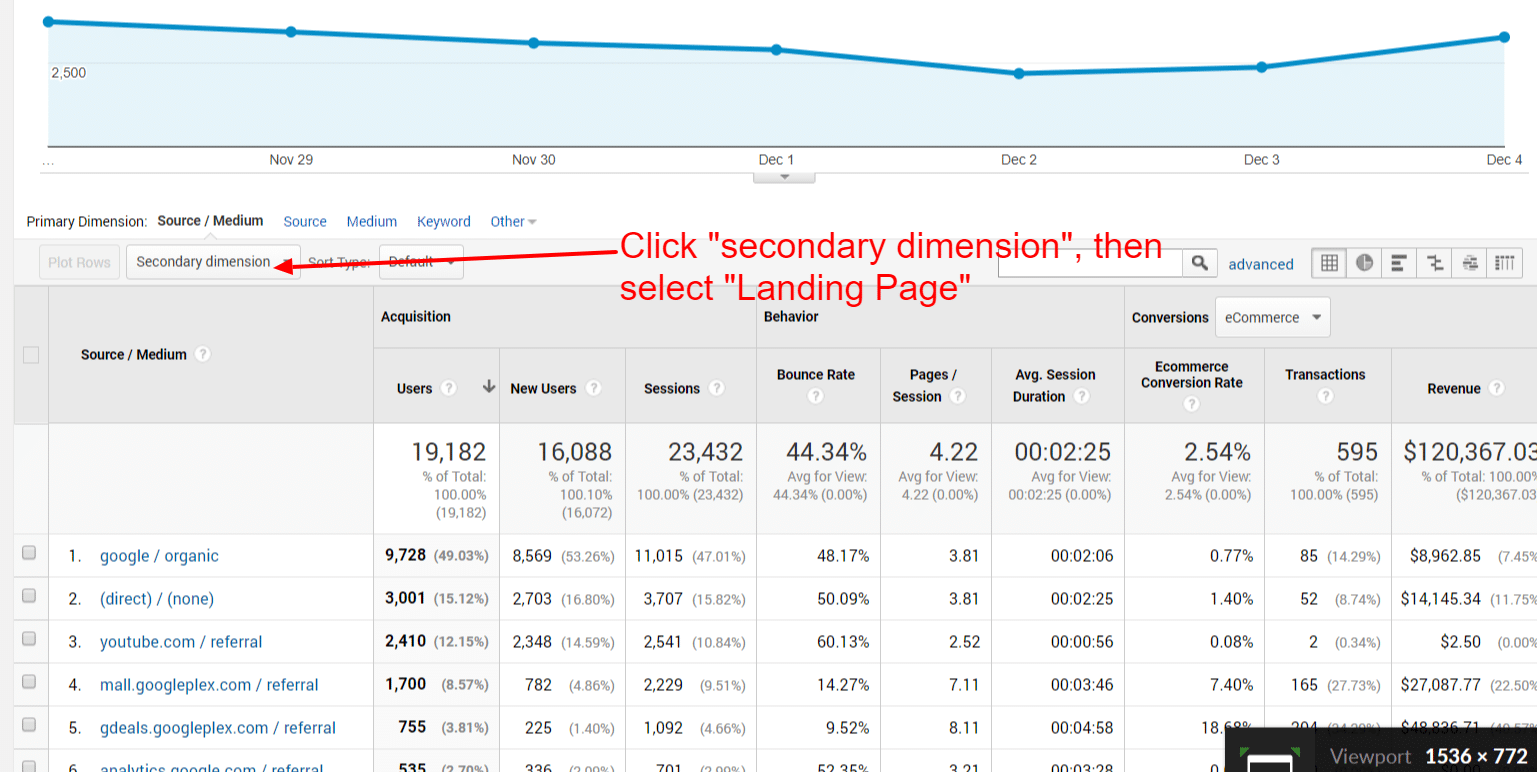Comprehensive Insights Making Use Of Secondary Dimension in Google Analytics
Comprehensive Insights Making Use Of Secondary Dimension in Google Analytics
Blog Article
Enhance Your Information Evaluation Utilizing Secondary Dimension in Google Analytics
Checking out the abilities of additional dimensions in Google Analytics opens up a world of possibilities for refining information evaluation. The ability to dissect info better beyond the surface area level provides a nuanced view that can shape critical decisions. By layering added measurements onto primary data sets, a more elaborate story arises, shedding light on user communications and efficiency indicators. This dynamic method to information exam holds the essential to unlocking hidden patterns and fads that might change exactly how services interpret their digital impact.
Comprehending Secondary Measurements
Additional dimensions in Google Analytics refer to added criteria that can be included to the key measurement, allowing for a more detailed evaluation of information (Secondary Dimension in Google Analytics). By integrating secondary dimensions, analysts can section and filter information to uncover patterns, fads, and connections that might not be noticeable when looking at the information as a whole.

Advantages of Using Secondary Dimensions
When assessing information in Google Analytics, the application of secondary dimensions offers vital understandings into user habits and performance metrics. By adding a secondary dimension to your primary information, you can delve deeper right into the characteristics of your website visitors and their communications.
Furthermore, secondary measurements boost the context of your key data, supplying an extra extensive sight of individual interaction and performance metrics. Generally, the usage of secondary dimensions in Google Analytics can significantly boost the deepness and quality of your data evaluation, leading to more educated decision-making and enhanced end results.
Exactly How to Include Secondary Dimensions
By including additional dimensions in Google Analytics, customers can gain deeper insights right into their information evaluation procedure, permitting more comprehensive assessment of customer behavior and efficiency metrics. Adding secondary dimensions is an uncomplicated process that can significantly boost the deepness of evaluation. To add a secondary dimension in Google Analytics, start by browsing to the report you intend to analyze. Once in the report, situate the "Additional measurement" tab over the data table. Click it to expose a dropdown menu with different alternatives such as Behavior, Technology, and Custom-made Dimensions. Select the measurement you wish to add, such as 'Source/Medium' or 'Device Category'. This secondary measurement will after that be put on your existing data, supplying additional context and permitting an extra thorough analysis of customer communications. By his response using second measurements successfully, individuals can reveal useful understandings that may have otherwise been forgotten, resulting in educated decision-making and boosted efficiency techniques.
Studying Data With Additional Dimensions
Making use of second measurements in data evaluation gives an extra thorough understanding of individual habits and efficiency metrics. By including a secondary dimension to your primary information established useful content in Google Analytics, you can dive deeper into the attributes of your internet site visitors and their interactions. As an example, combining the main dimension of 'source/medium' with the secondary dimension of 'landing web page' can reveal which details web pages are attracting web traffic from various resources, helping you maximize these pages for far better involvement.

Basically, analyzing information with secondary dimensions encourages you to obtain beneficial insights into customer habits, identify fads, and make informed choices to enhance the performance of your digital residential or commercial properties.
Best Practices for Additional Measurements
In information evaluation, including second dimensions properly can significantly boost the deepness of insights derived from metrics and user habits patterns. When utilizing second measurements in Google Analytics or any type of other logical device, it is important to follow finest practices to ensure the precision and importance of the information evaluation.
One secret ideal practice is to carefully select additional dimensions that enhance the main dimension being analyzed. Picking additional measurements that offer extra context or further division can provide a more detailed understanding of the information. It is additionally necessary to avoid overcomplicating the evaluation by including a lot of additional dimensions, which may bring about complication or dilution of understandings.
In addition, it is advisable to explore different combinations of primary and secondary measurements to discover brand-new correlations and fads. Routinely fine-tuning the option and assessing of secondary dimensions based on the details objectives of the evaluation can bring about more workable insights. By adhering to these ideal practices, data experts can leverage secondary measurements efficiently to improve the total information evaluation procedure and decision-making abilities.

Verdict
To conclude, integrating secondary dimensions in Google Analytics is essential for a detailed data analysis technique. By leveraging secondary dimensions together with main ones, marketing professionals and analysts can reveal beneficial insights and Visit Your URL correlations that can inform decision-making and optimize electronic advertising and marketing techniques. Recognizing how to efficiently utilize second dimensions and following ideal methods will certainly allow professionals to extract meaningful data and boost their overall efficiency metrics.
Secondary dimensions in Google Analytics refer to added parameters that can be included to the main measurement, allowing for a much more comprehensive analysis of information. By including additional measurements, experts can section and filter information to uncover patterns, patterns, and correlations that could not be noticeable when looking at the data as a whole. Integrating the primary measurement of 'source/medium' with the additional measurement of 'touchdown web page' can disclose which specific web pages are drawing in website traffic from various sources, assisting you optimize these web pages for better involvement.
One trick best technique is to thoroughly select additional dimensions that complement the main measurement being assessed. By following these best techniques, information experts can take advantage of additional dimensions properly to enhance the total information analysis procedure and decision-making capacities.
Report this page